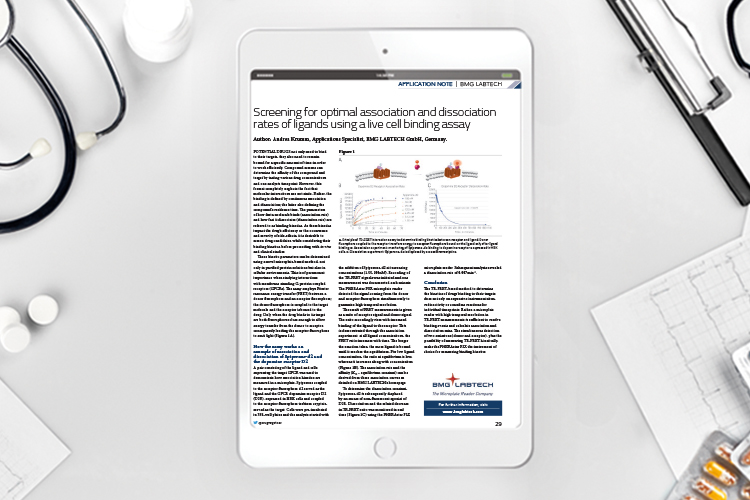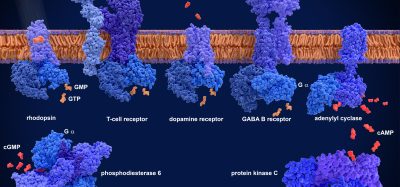Application note: Screening for optimal association and dissociation rates of ligands using a live cell binding assay
Posted: 28 May 2020 | BMG Labtech GmbH | No comments yet
Potential drugs not only need to bind to their targets, they also need to remain bound for a specific amount of time in order to work efficiently.
Compound screens can determine the affinity of the compound and target by testing various drug concentrations and one analysis timepoint. However, this format completely neglects the fact that molecular interactions are not static. Rather, the binding is defined by continuous association and dissociation; the latter also defining the compound’s residence time. The parameters of how fast a molecule binds (association rate) and how fast it dissociates (dissociation rate) are referred to as binding kinetics. As these kinetics impact the drug’s efficiency or the occurrence and severity of side-effects, it is desirable to screen drug candidates, while considering their binding kinetics, before proceeding with in vivo and clinical studies.
Related content from this organisation
- Product hub: Targeted protein degradation – next-generation therapeutics
- ebook: Binding kinetics in drug discovery
- Application note: Competitive high-throughput analysis of kinase inhibitor binding kinetics
- Product hub: High-throughput screening of cyclic peptide libraries for developing drugs to challenging targets
- Application note: Screening for optimal association and dissociation rates of ligands using a live cell binding assay
Related topics
Assays, Drug Targets, Kinetics, Screening
Related organisations
BMG Labtech GmbH









